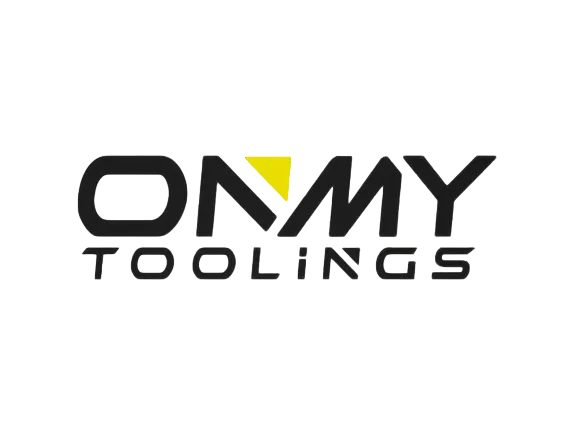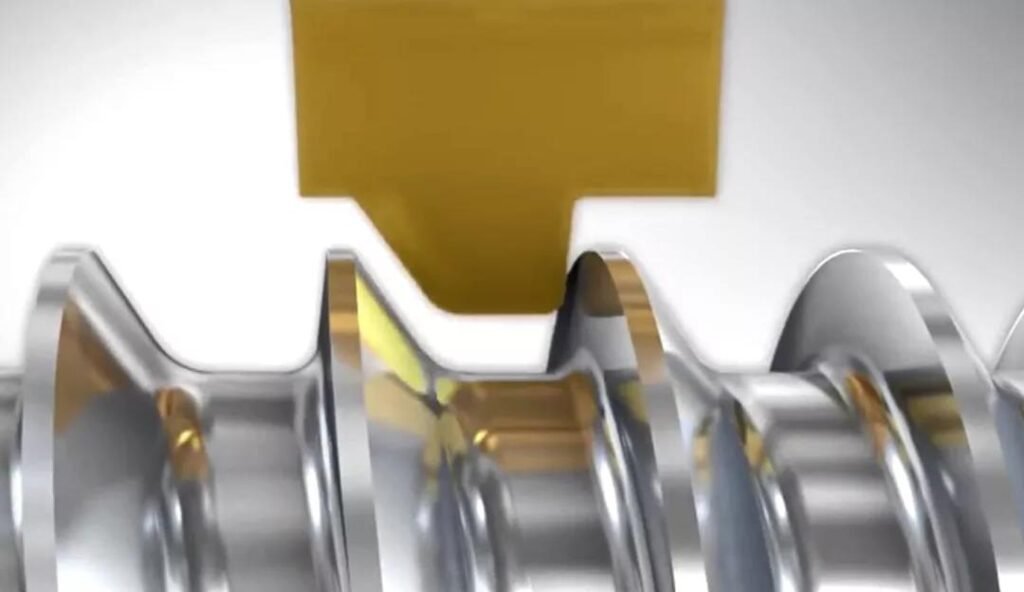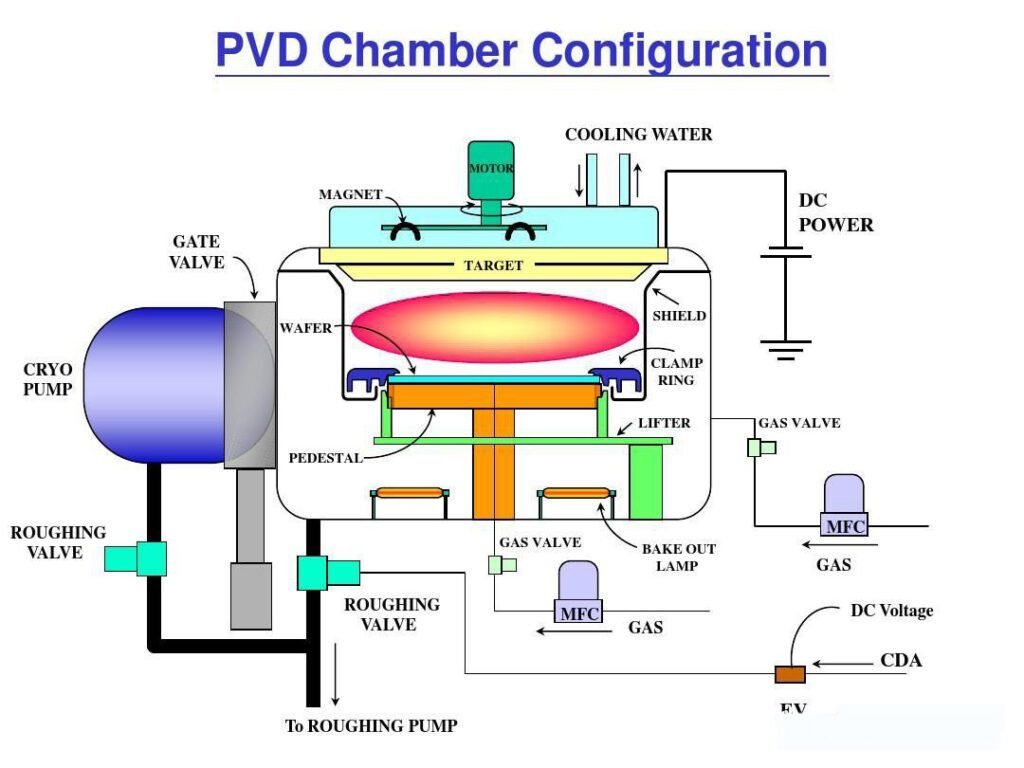在机械加工中,许多轴类零件的长径比L/d很大>25. Under the effects of cutting forces, gravity, and dead-center tailstock forces, horizontally oriented slender shafts can easily bend or even become unstable. Therefore, measures must be taken to improve the force conditions on slender axles during turning operations.
- Analysis of Factors Causing Bending Deformation of Turning Slender Axle
- measures to improve the machining accuracy of turning slender axles
- What are the main causes of bending deformation of turning slender axles?
- What clamping methods are suitable for turning slender axles?
- How can cutting forces be reduced during turning?
- Apart from clamping and cutting parameters, what other techniques can help?
- How should tools, fixtures and machining be monitored?
- What is the overall systematic approach to solving this problem?
Analysis of Factors Causing Bending Deformation of Turning Slender Axle

There are mainly two traditional clamping methods for turning long and thin rods on lathes: one is one-chuck one-center clamping; the other is two-center clamping. Here the main analysis focuses on one-chuck one-center clamping.
Through actual machining analysis, the main causes of bending deformation of turning slender axles during turning are:
(1) Deformation caused by cutting forces
The cutting forces generated during turning can be decomposed into axial cutting force PX, radial cutting force PY and tangential cutting force PZ. Different cutting forces have different impacts on bending deformation when turning slender axles.
1) Impact of radial cutting force PY
The radial cutting force acts perpendicularly on the horizontal plane passing through the rod’s axis. Due to the poor rigidity of the turning slender axle, the radial force will bend the rod horizontally within the plane, causing bending deformation.
2) Impact of axial cutting force PX
The axial cutting force acts parallel to the direction of the rod’s axis, forming a bending moment on the workpiece. For general turning, the impact of axial cutting force on workpiece bending is not significant and can be ignored. However, due to the poor rigidity and stability of turning slender axles, excessive axial cutting force will lead to longitudinal bending deformation by pressing the rod.
(2)Impact of cutting heat
Cutting heat generated during machining will cause thermal expansion and elongation of the workpiece. During turning, the positions of the chuck and tailstock are fixed. Therefore, the distance between them remains unchanged. This restricts the axial expansion of heated turning slender axles, causing bending deformation due to axial compression.
In summary, improving the machining accuracy of turning slender axle is essentially about controlling deformation caused by forces and heat during the machining process.
measures to improve the machining accuracy of turning slender axles
When machining turning slender axles, different measures should be taken according to different production conditions to improve their machining accuracy.
(1)Choosing a Suitable Clamping Method
The two traditional clamping methods for turning slender axles on lathes are two-center clamping and one-chuck one-center clamping.
Two-center clamping ensures accurate positioning of the workpiece and easy concentricity control. However, it is not suitable for machining turning slender axles due to low rigidity and high bending deformation. It is only suitable for parts with a small length-diameter ratio, small machining allowance and high concentricity requirements.
One-chuck one-center clamping is commonly used for turning slender axles. However, if the center is tightened too much in this method, it will not only bend the rod but also restrict axial thermal expansion during turning, causing bending deformation due to axial compression. Misalignment between the chuck jaws and center hole during clamping can also induce bending deformation.
Therefore, in one-chuck one-center clamping, live centers with elasticity should be used to allow free thermal expansion of the workpiece and reduce heat bending deformation. An opened steel ring can also be placed between chuck jaws and workpieces to reduce axial contact length and eliminate misalignment, lowering bending deformation.
(2) Directly reduce bending deformation of turning slender axles
- Use trailing tools and steady rests
When turning slender axles with one-chuck one-center clamping, trailing tools and steady rests are traditionally used to increase the rigidity of the workpiece and effectively reduce the influence of radial cutting forces.
- Use the axial pulling method for turning slender axles
Using trailing tools and steady rests can increase workpiece rigidity and basically eliminate the impact of radial forces. However, it cannot solve the problem of axial forces bending the workpiece, especially for turning slender axles with larger diameters where bending deformation is more significant. Therefore, an axial pulling method can be used.
Axial pulling turning refers to applying an axial pulling force to the workpiece by a specially designed pulling chuck during turning, keeping the workpiece under tension and solving the problem of axial forces causing bending. It also reduces bending caused by radial forces and compensates for axial expansion due to cutting heat, improving rigidity and accuracy.
- Use the reverse turning method for turning slender axles
In reverse turning, the cutting tool feeds from the chuck towards the tailstock, creating an axial pulling force on the workpiece to eliminate bending caused by axial forces. A live tailstock center also compensates for contact deformation and thermal expansion between the tool and tailstock, preventing pressure bending.
- Use the magnetic cutting method for turning slender axles
The magnetic cutting method works on a similar principle to reverse turning. An axial stretching force is applied to the workpiece magnetically during turning to reduce bending deformation and improve machining accuracy.
(3) Reasonably control cutting parameters
Whether the cutting parameters are reasonably set affects the size of cutting forces and the amount of cutting heat generated during machining, as well as the resulting deformation.
- Cutting depth
Underdetermined rigidity conditions, cutting forces and heat increase with greater cutting depth, exacerbating workpiece deformation. Hence cutting depth should be minimized for turning slender axles.
- Feed rate
While a larger feed rate increases the removed thickness and forces, the force increase is non-proportional, lowering the workpiece’s deformation coefficient. From efficiency, increasing feed is preferable to depth.
- Cutting speed
Higher speeds lower forces as the rising temperature reduces tool-workpiece friction and deformation. However, excessively high speed can induce bending due to centrifugal forces, disrupting stability. So speed should be controlled within a suitable range and lowered for larger diameter workpieces.
(4) Choosing an appropriate tool geometry
In order to minimize the bending deformation of turning slender axles during turning, it’s better to produce smaller cutting forces. The rake angle, main angle and edge angle have maximum influence on cutting forces among tool geometric angles.
1.Rake angle (γ)
The rake angle (γ) directly affects cutting forces, temperature and power. Increasing γ reduces plastic deformation of the machined metal layer and significantly lowers forces. For turning slender axles, γ is kept as large as possible within the tool strength limit, generally 13°-17°.
2.Main angle (kr)
The main angle (kr) affects the sizes and ratios of three cutting force components. Radial force reduces noticeably as kr increases, while tangential force rises within 60°-90°. A range of 60°-75° maintains a reasonable force ratio. Usually kr greater than 60° is used.
3.Edge angle (λs)
The edge angle (λs) influences chip flow direction, tooltip strength and force ratios. Radial force clearly decreases but axial and tangential forces rise with increasing λs. A range of -10°-+10° maintains a reasonable force ratio. Usually, a positive λs of 0-10° is adopted to direct chips onto the machined surface.
Due to the low rigidity of turning slender axles, the deformation caused by forces and heat during turning is significant, making it difficult to ensure the required machining quality of turning slender axles. By adopting suitable clamping methods and advanced machining techniques, rationally selecting tool geometry, cutting parameters and other measures, the machining quality requirements of turning slender axles can be met.
What are the main causes of bending deformation of turning slender axles?
The main causes are cutting forces, especially radial forces, and cutting heat which induce plastic deformation and elongation. The low rigidity of turning slender axles makes them more prone to deformation.
What clamping methods are suitable for turning slender axles?
Axial pulling clamping and two-center clamping provide better rigidity and resistance to deformation compared to traditional chuck-steady rest clamping.
How can cutting forces be reduced during turning?
Optimizing tool geometry with increased rake and main angles, selecting moderate cutting speeds and feeds, using rigid tooling and steady rests, and applying sufficient coolant.
Apart from clamping and cutting parameters, what other techniques can help?
Methods like reverse turning, magnetic machining and dividing workpieces can balance forces and restrain deformation. Compensating for thermal effects is also important.
How should tools, fixtures and machining be monitored?
Frequently inspecting for accuracy, making adjustments based on trial runs, and ensuring the precision of all lathe system components and their compensation abilities.
What is the overall systematic approach to solving this problem?
Comprehensively analyzing causes, selecting the right techniques matching workpiece conditions, optimizing related factors, and closely monitoring the process.


